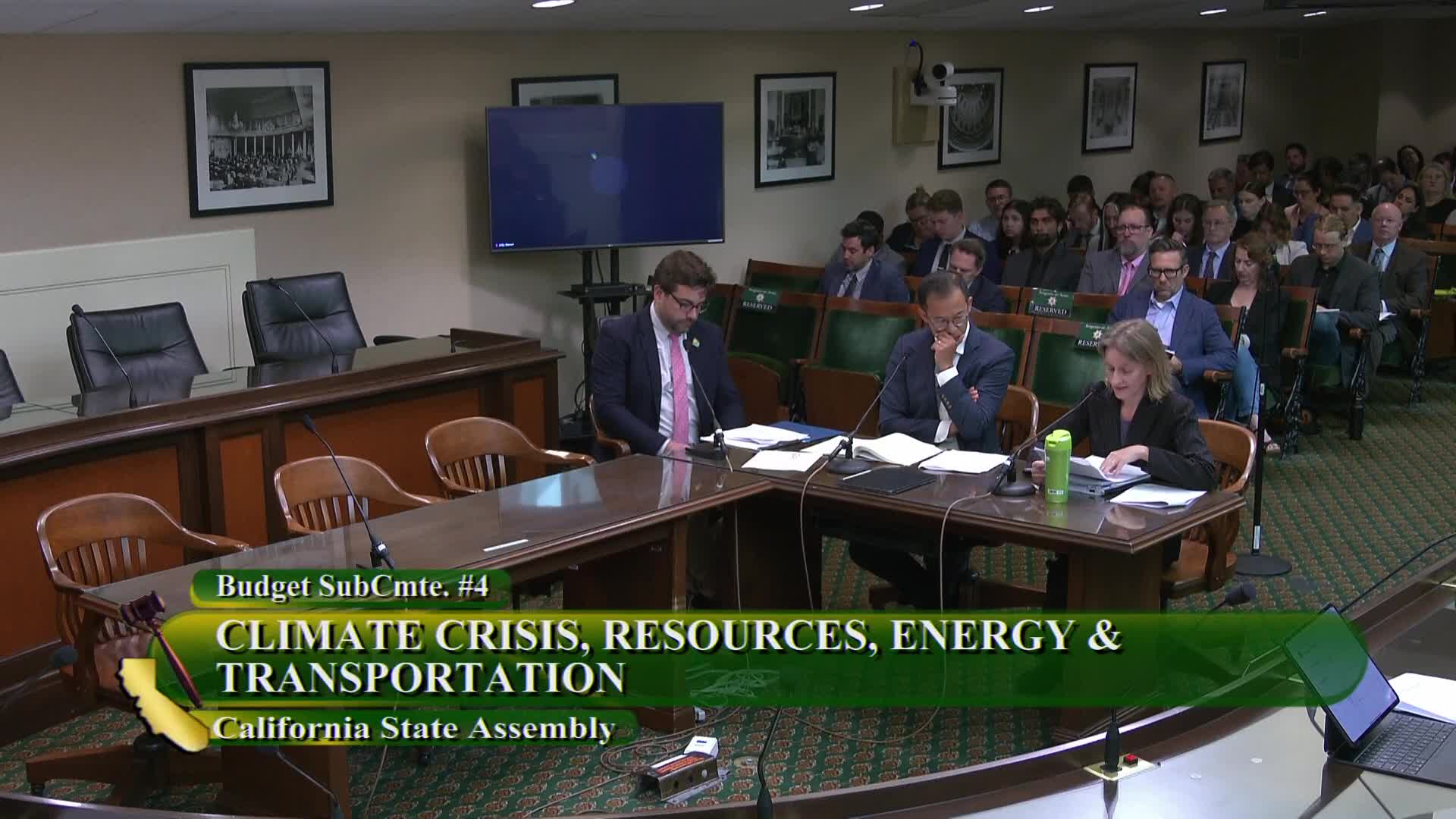Kyle Meng discusses California cap and trade effectiveness at energy committee hearing
April 30, 2025 | California State Assembly, House, Legislative, California
This article was created by AI summarizing key points discussed. AI makes mistakes, so for full details and context, please refer to the video of the full meeting. Please report any errors so we can fix them. Report an error »

The Assembly Budget Subcommittee No. 4 on Climate Crisis, Resources, Energy, and Transportation convened on April 30, 2025, to discuss critical aspects of California's cap-and-trade program and its implications for greenhouse gas (GHG) emissions reduction and state funding priorities. The meeting featured expert testimonies and deliberations on the effectiveness and future of the program.
The session began with a focus on the importance of funding allocations in both capped and uncapped sectors, emphasizing the need for cost-effective strategies that also consider co-benefits beyond GHG reductions. Experts highlighted the trade-off between providing continuous appropriations for certain programs, which offers certainty, versus maintaining legislative oversight for flexibility in budget discussions.
Dr. Kyle Meng, an associate professor at UC Santa Barbara, presented insights on the cap-and-trade program, describing it as a leading example of effective climate policy. He underscored the significance of the revenue generated from carbon permits, advocating for its use in addressing environmental justice and climate adaptation needs. Dr. Meng cautioned that GGRF funds should target emissions reductions not already incentivized by the carbon market to avoid unnecessary expenditures.
He identified two key areas for GGRF funding: promoting new technologies, such as direct air capture, and addressing high electricity prices in California, which he described as a market failure hindering decarbonization efforts. Dr. Meng proposed that strategic allocation of GGRF could significantly lower electricity costs for low-income households, enhancing affordability while supporting climate goals.
Following Dr. Meng, Dr. Cullenward from the University of Pennsylvania and vice chair of the Independent Emissions Market Advisory Committee, reiterated the committee's consensus recommendation for the reauthorization of the cap-and-trade program. He emphasized the program's ongoing relevance in meeting California's ambitious climate targets and its potential to generate substantial revenue for state priorities.
The discussions underscored the critical role of the cap-and-trade program in California's climate strategy, highlighting the need for careful consideration of funding allocations to maximize both environmental and economic benefits. The meeting concluded with a commitment to further explore these themes as California continues to navigate its climate policy landscape.
The session began with a focus on the importance of funding allocations in both capped and uncapped sectors, emphasizing the need for cost-effective strategies that also consider co-benefits beyond GHG reductions. Experts highlighted the trade-off between providing continuous appropriations for certain programs, which offers certainty, versus maintaining legislative oversight for flexibility in budget discussions.
Dr. Kyle Meng, an associate professor at UC Santa Barbara, presented insights on the cap-and-trade program, describing it as a leading example of effective climate policy. He underscored the significance of the revenue generated from carbon permits, advocating for its use in addressing environmental justice and climate adaptation needs. Dr. Meng cautioned that GGRF funds should target emissions reductions not already incentivized by the carbon market to avoid unnecessary expenditures.
He identified two key areas for GGRF funding: promoting new technologies, such as direct air capture, and addressing high electricity prices in California, which he described as a market failure hindering decarbonization efforts. Dr. Meng proposed that strategic allocation of GGRF could significantly lower electricity costs for low-income households, enhancing affordability while supporting climate goals.
Following Dr. Meng, Dr. Cullenward from the University of Pennsylvania and vice chair of the Independent Emissions Market Advisory Committee, reiterated the committee's consensus recommendation for the reauthorization of the cap-and-trade program. He emphasized the program's ongoing relevance in meeting California's ambitious climate targets and its potential to generate substantial revenue for state priorities.
The discussions underscored the critical role of the cap-and-trade program in California's climate strategy, highlighting the need for careful consideration of funding allocations to maximize both environmental and economic benefits. The meeting concluded with a commitment to further explore these themes as California continues to navigate its climate policy landscape.
View full meeting
This article is based on a recent meeting—watch the full video and explore the complete transcript for deeper insights into the discussion.
View full meeting
